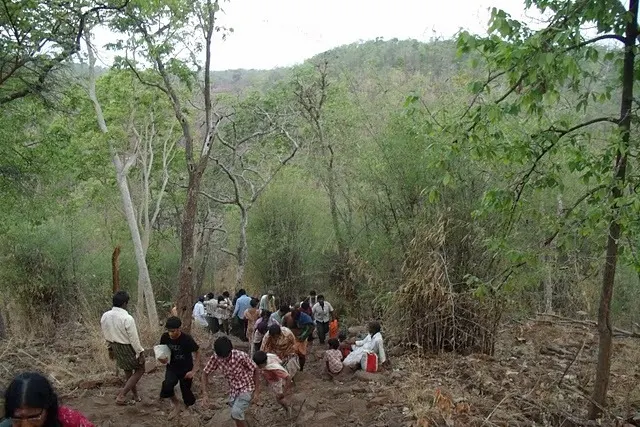South India Amarnath Saleshwaram Water Fall Cave and Temple, Nallmala Forest. This temple is locally known as Lingamaiah Temple.
Saleshwarm (Lord Shiva Temple) located in “Tiger Reserve Nallamala Forest” nearly 30 KM from Mannanur, 50 KM from Srisailam. Temple is situated in deep valley, throughout the year temple and associated road will be closed but it will be opened for 5 days during (March-April). Visiting the temple in moon light on chaitra pournima (The full moon day of Chaitra (March-April)) is auspicious. During this season APSRTC (Acchampeta and Kalvakurthi depots) arranges special buses for yatra.
We started journey on Monday 17th the day before chaitra pournima from Hyderabad. There was couple of halts between the journey, Namely Dindi reservoir, Mannanur, and Farhabad.
Near by places:
1) Sakshi Ganapati (At the entrance of Srisailam)
2) Paladhara Panchadhara (Small Water stream from forest)
3) Pathala Ganaga (Huge no of steps / Ropeway)
4) Kailash Sikhar (One needs to watch temple from Nandi)
5) Akkamahadevi Caves (Need to travel in Small boat in Krishna River)
6) Ista Kamesewari temple (Only pvt Jeeps can go, great thrilling experience)
7) Mallela Teertham
Saleshwarm (Lord Shiva Temple) located in “Tiger Reserve Nallamala Forest” nearly 30 KM from Mannanur, 50 KM from Srisailam. Temple is situated in deep valley, throughout the year temple and associated road will be closed but it will be opened for 5 days during (March-April). Visiting the temple in moon light on chaitra pournima (The full moon day of Chaitra (March-April)) is auspicious. During this season APSRTC (Acchampeta and Kalvakurthi depots) arranges special buses for yatra.
We started journey on Monday 17th the day before chaitra pournima from Hyderabad. There was couple of halts between the journey, Namely Dindi reservoir, Mannanur, and Farhabad.
Near by places:
1) Sakshi Ganapati (At the entrance of Srisailam)
2) Paladhara Panchadhara (Small Water stream from forest)
3) Pathala Ganaga (Huge no of steps / Ropeway)
4) Kailash Sikhar (One needs to watch temple from Nandi)
5) Akkamahadevi Caves (Need to travel in Small boat in Krishna River)
6) Ista Kamesewari temple (Only pvt Jeeps can go, great thrilling experience)
7) Mallela Teertham




